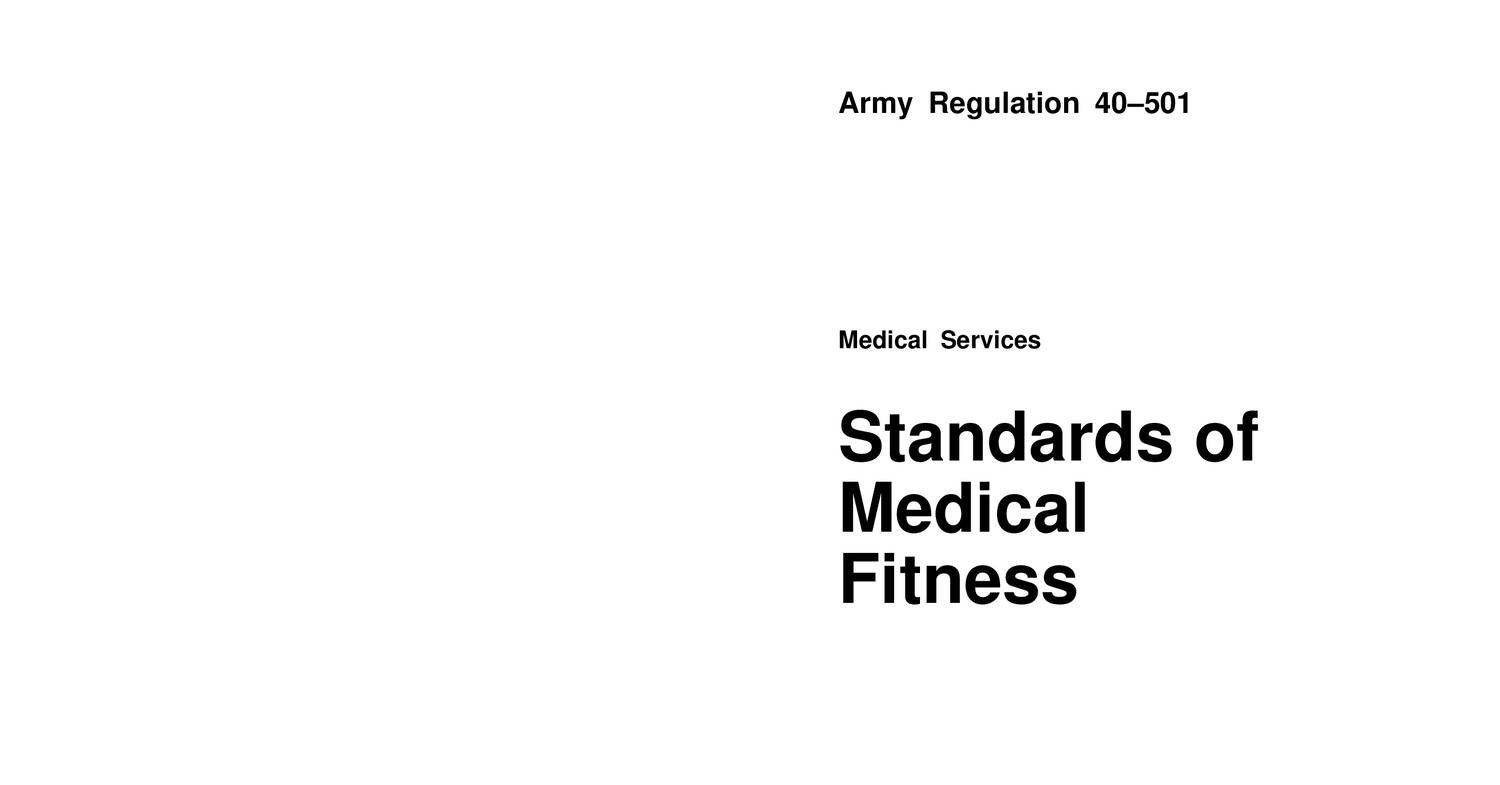Army Regulation 40 501 : What it is
Army Regulation 40-501: What It Is and How It Impacts You
Army Regulation 40-501, also known as AR 40-501, is a comprehensive guide that outlines the standards and procedures for the Army's physical readiness and medical fitness programs. This regulation is essential for all personnel in the U.S. Army as it governs the requirements for physical fitness, medical examinations, and standards for medical fitness. In this post, we will explore the key aspects of AR 40-501 and how it affects you.
Why is Army Regulation 40-501 Important?
The importance of Army Regulation 40-501 cannot be overstated. It is designed to ensure that all Army personnel are physically fit and medically capable of performing their duties effectively. This regulation acts as a guide for maintaining the health and well-being of soldiers and promotes overall readiness for mission success.
Who Does Army Regulation 40-501 Apply To?

Army Regulation 40-501 applies to all active duty, reserve, and National Guard personnel. It is not limited to only combat soldiers but also extends to civilian employees working within the Army. This comprehensive regulation covers every aspect of physical and medical fitness to ensure that all personnel meet the required standards.
Understanding the Physical Fitness Standards
The physical fitness standards outlined in AR 40-501 are crucial for maintaining a high level of readiness in the Army. These standards specify the minimum requirements for various components of physical fitness, such as cardiovascular endurance, muscular strength, and body composition. Soldiers are regularly tested using the Army Physical Fitness Test (APFT) to ensure they meet these standards.
Medical Examinations and Their Significance
Another vital aspect outlined in AR 40-501 is the requirement for medical examinations. These examinations are conducted to assess the overall health and medical fitness of Army personnel. Medical professionals evaluate physical and mental health, identify any potential ailments or conditions that may hinder performance, and provide necessary recommendations for treatment or rehabilitation if needed.
FAQs about Army Regulation 40-501
1. Q: What happens if I do not meet the physical fitness standards?
A: Failing to meet the physical fitness standards outlined in AR 40-501 can have serious consequences. It may result in receiving a non-compliant rating, which can lead to disciplinary action, loss of privileges, and even separation from the Army.
2. Q: Are there any exemptions to the medical fitness standards?
A: Yes, there are exemptions specified in AR 40-501. These exemptions are evaluated on a case-by-case basis and may be granted for personnel with certain medical conditions or physical limitations. However, the ultimate decision lies with the Army's Medical Evaluation Board.
3. Q: Can I appeal a medical evaluation that deems me unfit for duty?
A: Yes, you have the right to appeal a medical evaluation if you believe it to be incorrect or unjust. The appeals process is outlined in AR 40-501, and it is essential to follow the proper procedures and provide supporting documentation for your case.
In Conclusion
Army Regulation 40-501 is a critical document that shapes the physical readiness and medical fitness standards for Army personnel. It ensures that all soldiers are in optimal physical and mental condition to perform their duties effectively. By adhering to the guidelines set forth in this regulation, the Army maintains its high standards of readiness and ensures the well-being of its personnel.
Disclaimer: The information in this post is a summary of AR 40-501 for informational purposes only. For the complete and official regulation, please refer to the official U.S. Army documentation.
Sources:
- SlideServe - AR 40-501
- StudyLib - AR 40-501
Disclaimer: The images used in this post are for illustrative purposes only and do not imply endorsement or association with the content.
Army Regulation 40-502 - Army Military
 Image Source : armymilitary.net
Image Source : armymilitary.net Army Regulation AR 40-501 Medical Services: Standards Of Medical
 Image Source : books.apple.com
Image Source : books.apple.com ar medical
PPT - ACCIDENT AVOIDANCE TRAINING PowerPoint Presentation - ID:41719
regulation avoidance
Army Profile Regulation 40 501 - Army Military
 Image Source : armymilitary.net
Image Source : armymilitary.net Army Regulation 40-3 - Army Military
 Image Source : armymilitary.net
Image Source : armymilitary.net PPT - Army Combat Developments And The Laboratory SAFMLS 2010
 Image Source : www.slideserve.com
Image Source : www.slideserve.com army laboratory developments combat 2010 ppt powerpoint presentation
AR40-501(physical-st..
 Image Source : studylib.net
Image Source : studylib.net Army Regulation 40–501.pdf | DocDroid
 Image Source : www.docdroid.net
Image Source : www.docdroid.net docdroid regulation army
Army regulation 40-3. Docdroid regulation army. Ar medical. Army profile regulation 40 501. Army regulation 40-502